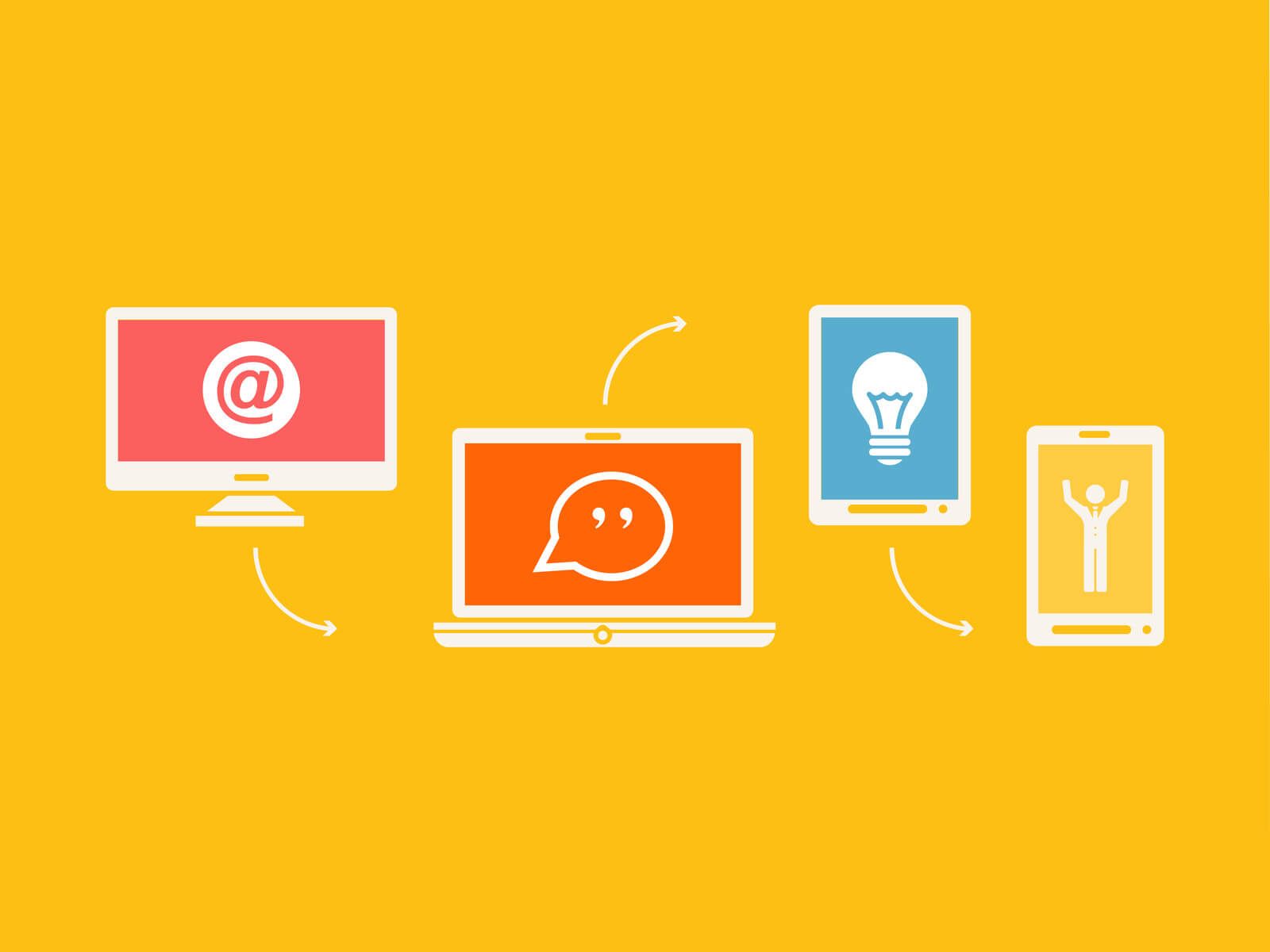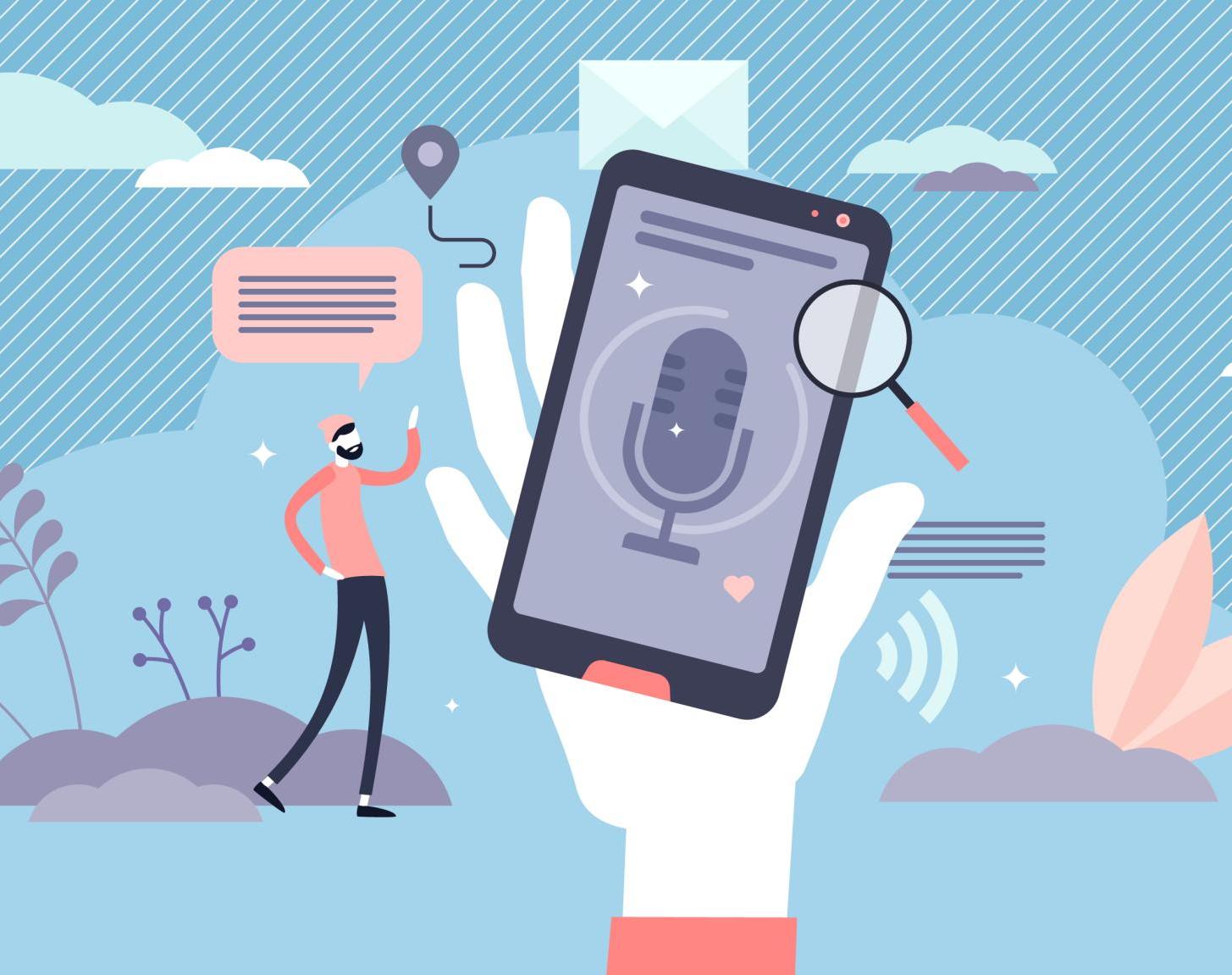A landing page is a standalone web page designed specifically for a marketing or advertising campaign with a single goal in mind. It is created to direct visitors to take a specific action, such as filling out a form, subscribing to a newsletter, or making a purchase.
The importance of having a well-designed and effective landing page cannot be overstated. It is the first point of contact between a visitor and your brand, and it plays a crucial role in determining whether or not the visitor will take the desired action. A poorly designed landing page can cause visitors to bounce off the page without taking any action, resulting in a missed opportunity for your business.
Define Your Objective:
Before designing and creating your landing page, it's crucial to identify the purpose of the page and the desired action you want visitors to take. This will help you set a clear and measurable goal for the page and create a design and copy that effectively communicates your message and persuades visitors to take the desired action.
- Identifying the purpose of the landing page:
The first step is to determine the specific purpose of the landing page. Ask yourself questions like: What product or service am I promoting? What message do I want to convey? What problem am I solving for my target audience? Having a clear understanding of the purpose of the page will help you create a more focused and effective design and copy. - Setting a clear and measurable goal for the page:
Once you've identified the purpose of the page, set a clear and measurable goal for it. The goal should be specific, achievable, and aligned with your overall business objectives. For example, if the purpose of the page is to promote a new product, the goal could be to get 100 sign-ups for a free trial within a week. - Understanding the target audience and their needs:
To create a landing page that resonates with your target audience, you need to have a deep understanding of their needs, pain points, and motivations. Conducting market research and analyzing customer data can help you identify your target audience and create a design and copy that speaks directly to their needs and desires.
By defining your objective and understanding your target audience, you'll be able to create a landing page that effectively communicates your message and drives the desired action.
Crafting the Headline and Subheadline
The headline and subheadline of your landing page are the first things visitors will see, and they play a crucial role in capturing their attention and persuading them to stay on the page. A compelling headline and subheadline can help you create a strong first impression, establish credibility, and communicate your value proposition effectively.
Importance of a compelling headline and subheadline
A compelling headline and subheadline can make the difference between a visitor bouncing off your page or engaging with your content. They need to be attention-grabbing, persuasive, and relevant to the visitor's needs and desires. They should also communicate the main benefit of your product or service in a clear and concise way.
Tips for creating attention-grabbing headlines and subheadlines
To create attention-grabbing headlines and subheadlines, follow these tips:
- Be clear and concise: Your headline and subheadline should be easy to read and understand. Use simple language and avoid jargon or technical terms.
- Highlight the main benefit: Communicate the main benefit of your product or service in a clear and compelling way. Make sure visitors know what they will get by engaging with your content.
- Create urgency: Use words and phrases that create a sense of urgency, such as "limited time offer" or "act now."
- Use numbers and statistics: Numbers and statistics can help you establish credibility and persuade visitors to take action.
Examples of effective headlines and subheadlines:
- "Transform Your Body in 30 Days: Join Our Fitness Challenge Today!" (Headline)
- "Get Fit and Feel Great with Our Personalized Workout Plan" (Subheadline)
- "Boost Your Business with Our Powerful Marketing Tools" (Headline)
- "Get More Leads and Sales with Our Easy-to-Use Marketing Platform" (Subheadline)
By crafting attention-grabbing headlines and subheadlines that communicate the main benefit of your product or service, you'll be able to capture visitors' attention and persuade them to stay on your landing page.
Designing the Layout
The layout of your landing page plays a critical role in shaping the user experience and boost conversions. An effective layout should be visually appealing, easy to navigate, and communicate your message effectively. Here are some tips for creating an attractive and user-friendly layout:
Tips for creating an attractive and user-friendly layout
- Keep it simple: A cluttered layout can be overwhelming for visitors. Keep your design simple and focused on the main message and call-to-action.
- Use whitespace effectively: Whitespace can help your content stand out and create a more visually appealing layout. Use it strategically to guide visitors' attention to the most important elements of the page.
- Create a clear hierarchy: Use size, colour, and placement to create a clear hierarchy of content. This helps visitors navigate the page and understand the relationship between different elements.
- Optimize for mobile: More and more visitors are accessing the web on mobile devices, so it's important to create a responsive design that looks great on any screen size.
Best practices for choosing colours, fonts, and images
- Colours: Use colours that align with your brand and communicate the desired emotion or message. For example, blue can convey trust and security, while red can create a sense of urgency.
- Fonts: Choose fonts that are easy to read and align with your brand. Stick to no more than two or three fonts to create a consistent and cohesive design.
- Images: Use high-quality images that are relevant to your message and visually appealing. Avoid using stock photos that look generic or staged.
Examples of effective landing page layouts
- Simple and focused: A clean and minimalistic design with a clear hierarchy of content can be effective in communicating your message and driving conversions.
- Long-scrolling: A long-scrolling design can be effective in guiding visitors through a story or narrative and creating a more immersive user experience.
- Video-based: A landing page that uses video as its primary content can be engaging and effective in communicating complex ideas or emotional appeals.
Following these tips and best practices, you can create a landing page layout that is visually appealing, user-friendly, and optimized for conversions.
Writing the Copy
The copy on your landing page is just as important as the design. It's what communicates your message, establishes credibility, and persuades visitors to take action. Here are some tips for writing persuasive and engaging copy:
Importance of clear and concise copy
- Keep it simple: Avoid using jargon or technical language that your visitors may not understand. Use simple language and focus on the benefits of your product or service.
- Be concise: Your copy should be brief and to the point. Visitors should be able to quickly scan the page and understand the main message and call-to-action.
- Use active voice: Use active voice to create a sense of urgency and make your copy more engaging.
Tips for writing persuasive and engaging copy
- Focus on benefits: Instead of just listing features, focus on how your product or service can benefit your visitors. Highlight the problem you're solving and how your offering can make their life easier or better.
- Use social proof: Use customer testimonials, reviews, or case studies to establish credibility and demonstrate the value of your offering.
- Create a sense of urgency: Use language that creates a sense of urgency and encourages visitors to take action. For example, using phrases like "Limited time offer" or "Only a few spots left."
Best practices for formatting and structuring the copy
- Use headings and subheadings: Use headings and subheadings to break up the copy and make it easier to read. This also helps visitors quickly identify the main points and benefits of your offering.
- Use bullet points: Bullet points can make the information more scannable and easier to digest.
- Highlight key information: Use bold or italicized text to highlight key information and create emphasis.
By following these tips and best practices, you can create copy that is clear, concise, and persuasive. This will help you establish credibility, communicate your message effectively, and ultimately drive conversions.
Adding Visual Elements
Visual elements can enhance the effectiveness of your landing page by making it more appealing and engaging. Below are some tips for incorporating visual elements effectively:
Importance of incorporating visual elements
- Grab attention: Visual elements, such as images and videos, can grab the attention of visitors and draw them into your page.
- Communicate your message: Visual elements can help to communicate your message more effectively than text alone. They can help to illustrate your product or service and create an emotional connection with your visitors.
- Enhance credibility: Well-designed visual elements can also enhance the credibility of your page and help to establish trust with your visitors.
Tips for choosing and using images and videos
- Use high-quality images: Use high-quality images that are relevant to your message and reflect the tone and style of your brand.
- Choose appropriate videos: If you're using a video, make sure it's relevant to your message and communicates your value proposition effectively.
- Optimize for speed: Ensure that your visual elements are optimized for page load speed to prevent slow load times that may turn visitors away.
Examples of effective visual elements
- Product images: If you're selling a physical product, include high-quality images that show the product from different angles and highlight key features.
- Infographics: Use infographics to illustrate complex information or data in an easy-to-digest format.
- Testimonials: Use images or videos of satisfied customers to enhance the credibility of your page and demonstrate the value of your offering.
Incorporating well-designed visual elements into your landing page, you can enhance its effectiveness and drive conversions. Remember to choose relevant and high-quality images and videos that communicate your message effectively and establish trust with your visitors.
Adding Social Proof
Social proof is a powerful tool that can be used to build trust and credibility with your visitors. Tips for incorporating social proof effectively on your landing page:
Importance of social proof in building trust and credibility
- Social proof can provide validation: When visitors see that others have used and benefited from your product or service, it can provide validation and encourage them to take action.
- Social proof can enhance credibility: By showcasing testimonials or social media followers, you can enhance the credibility of your page and establish trust with visitors.
- Social proof can increase conversions: Adding social proof to your landing page can help to increase conversions by providing reassurance to visitors and reducing their anxiety about taking action.
Tips for incorporating social proof on the landing page
- Use testimonials: Include testimonials from satisfied customers to demonstrate the value of your product or service.
- Showcase social media followers: If you have a large social media following, showcase this on your landing page to enhance credibility and build trust.
- Display endorsements: If you've received endorsements from reputable sources or industry experts, display these prominently on your landing page.
- Highlight customer reviews: If your product or service has received positive reviews on third-party review sites, highlight these on your landing page.
Examples of effective social proof elements
- Testimonials: Include quotes from satisfied customers that highlight the benefits of your product or service.
- Social media followers: Display the number of social media followers or likes you have to demonstrate the popularity of your brand.
- Endorsements: Highlight any endorsements or mentions from reputable sources or industry experts.
- Customer reviews: Showcase positive reviews from third-party review sites such as Yelp or Google.
When incorporating social proof elements into your landing page, you can enhance its effectiveness and build trust and credibility with your visitors. Remember to use testimonials, social media followers, endorsements, and customer reviews effectively to provide validation and reassurance to visitors and increase conversions.
Adding a Call-to-Action (CTA)
A call-to-action (CTA) is a critical component of any landing page as it directs visitors to take a specific action. Tips for creating an effective CTA:
Importance of a strong and clear CTA
- Encourages action: A clear and compelling CTA encourages visitors to take action and increases the chances of conversion.
- Sets expectations: A well-crafted CTA sets clear expectations for what visitors can expect after they take action.
- Helps visitors navigate: A CTA helps visitors navigate the page and easily find the next step.
Tips for creating an effective CTA
- Use action-oriented language: The language used in the CTA should be clear and action-oriented, encouraging visitors to take immediate action.
- Be specific: The CTA should clearly state what action visitors should take, such as "Download Now" or "Sign Up Today."
- Create a sense of urgency: Using urgent language, such as "Limited Time Offer," can create a sense of urgency and encourage visitors to take action quickly.
Best practices for placing the CTA on the page
- Above the fold: Placing the CTA above the fold, where it's visible without the need to scroll, can increase its visibility and effectiveness.
- Make it stand out: Using contrasting colours or bold fonts can help the CTA stand out on the page and draw visitors' attention.
- Place it in a logical location: The CTA should be placed in a logical location, such as at the end of the copy or near a form, to make it easy for visitors to take action.
By following these tips, you can create a strong and effective CTA that encourages visitors to take action and increases the chances of conversion. Remember to use clear and action-oriented language, be specific, and create a sense of urgency where appropriate. Also, consider placing the CTA above the fold, making it stand out, and placing it in a logical location on the page.
Testing and Optimization
Creating a landing page is just the beginning of the process. To ensure its effectiveness, it's essential to test and optimize it continuously. Here are some tips for testing and optimizing your landing page:
Importance of testing and optimization
- Improve conversion rates: Testing and optimization allow you to identify areas for improvement and make changes that can increase the page's conversion rate.
- Understand visitor behaviour: Analyzing visitor behaviour can provide valuable insights into what's working and what's not on the page.
- Save time and money: By identifying and fixing issues early on, you can save time and money in the long run.
Best practices for A/B testing
- Test one element at a time: To accurately determine the impact of a change, only test one element at a time, such as the headline or CTA.
- Use a control group: Use a control group that receives the original version of the page to accurately compare the results of the two versions.
- Test with a significant sample size: To ensure the results are statistically significant, test with a large enough sample size.
Tools for tracking and analyzing the page's performance
- Google Analytics: Google Analytics provides valuable insights into visitor behavior and can track the performance of your landing page.
- A/B testing tools: There are many A/B testing tools available, such as Optimizely and Unbounce, that make it easy to set up and track A/B tests.
- Heatmap tools: Heatmap tools, such as Crazy Egg and Hotjar, allow you to see how visitors are interacting with your page and identify areas for improvement.
Tracking and analyzing your page's performance can provide the data to continuously improve your landing page's effectiveness and increase its conversion rate. Remember to test one element at a time, use a control group, and test with a significant sample size. Also, consider using tools such as Google Analytics, A/B testing tools, and heatmap tools to track and analyze your page's performance.
Additional Resources
Creating a high-converting landing page is not an easy task, and sometimes you might need additional help. Here are some useful tools and resources that can help you with the process:
- Landing page builders:
- Graphic design tools:
- A/B testing tools:
- Copywriting tools:
- Analytics tools:
These tools and resources can be invaluable when it comes to creating and optimizing your landing page. Don't be afraid to try out different tools and techniques to see what works best for your business.




